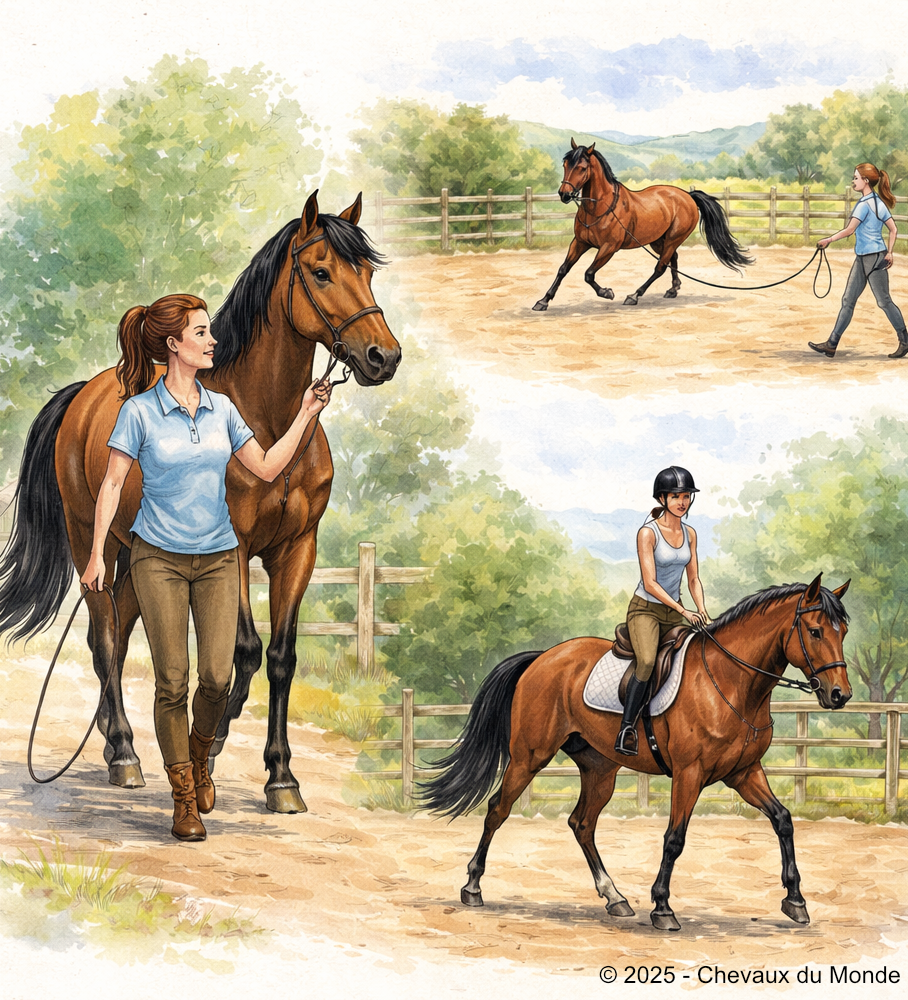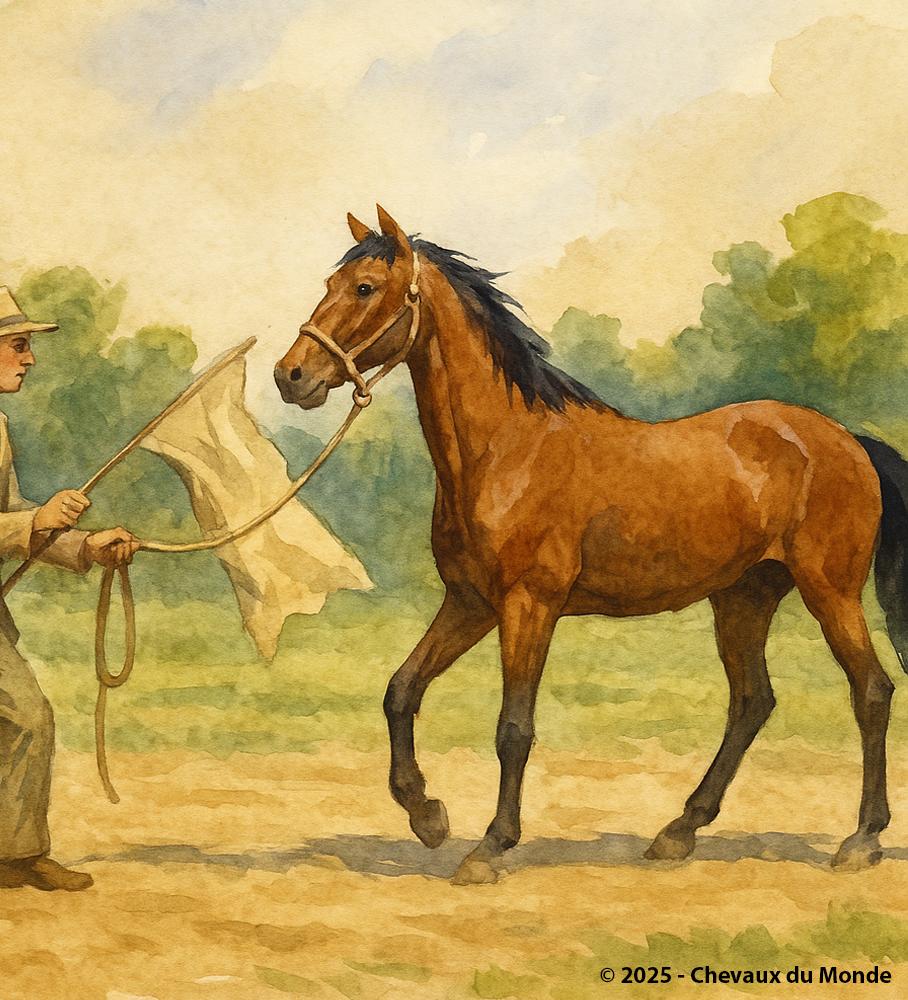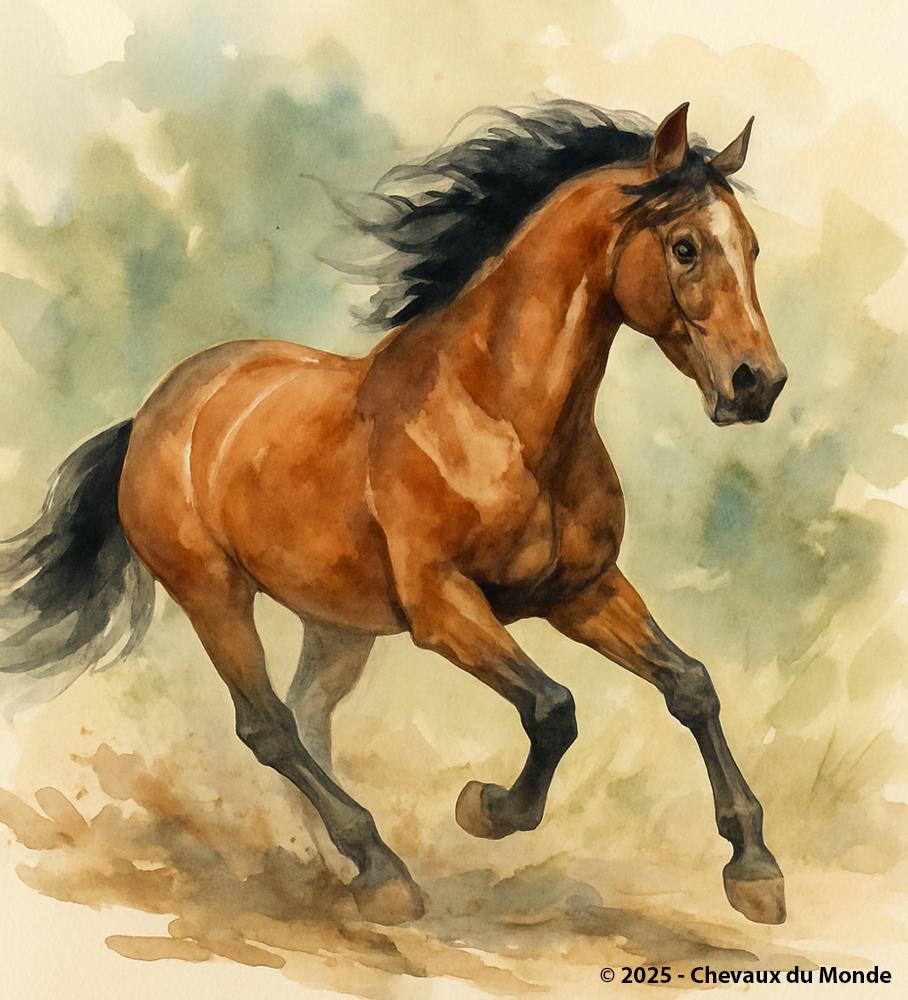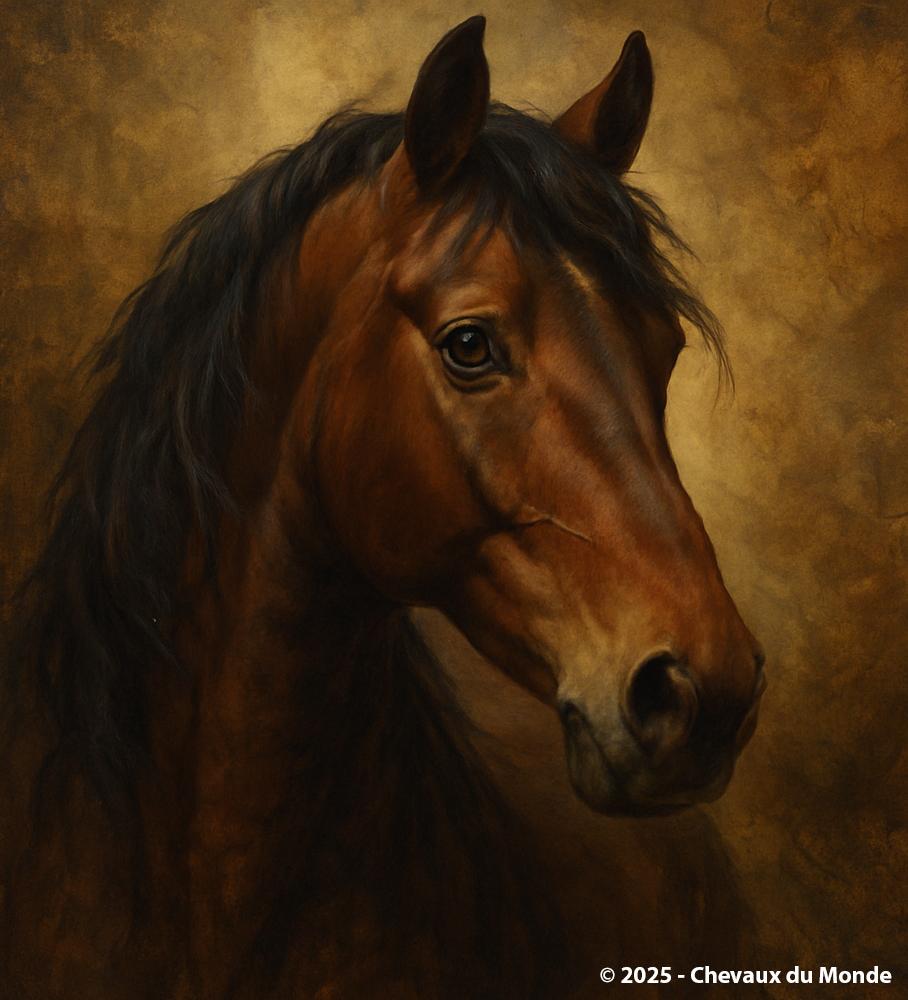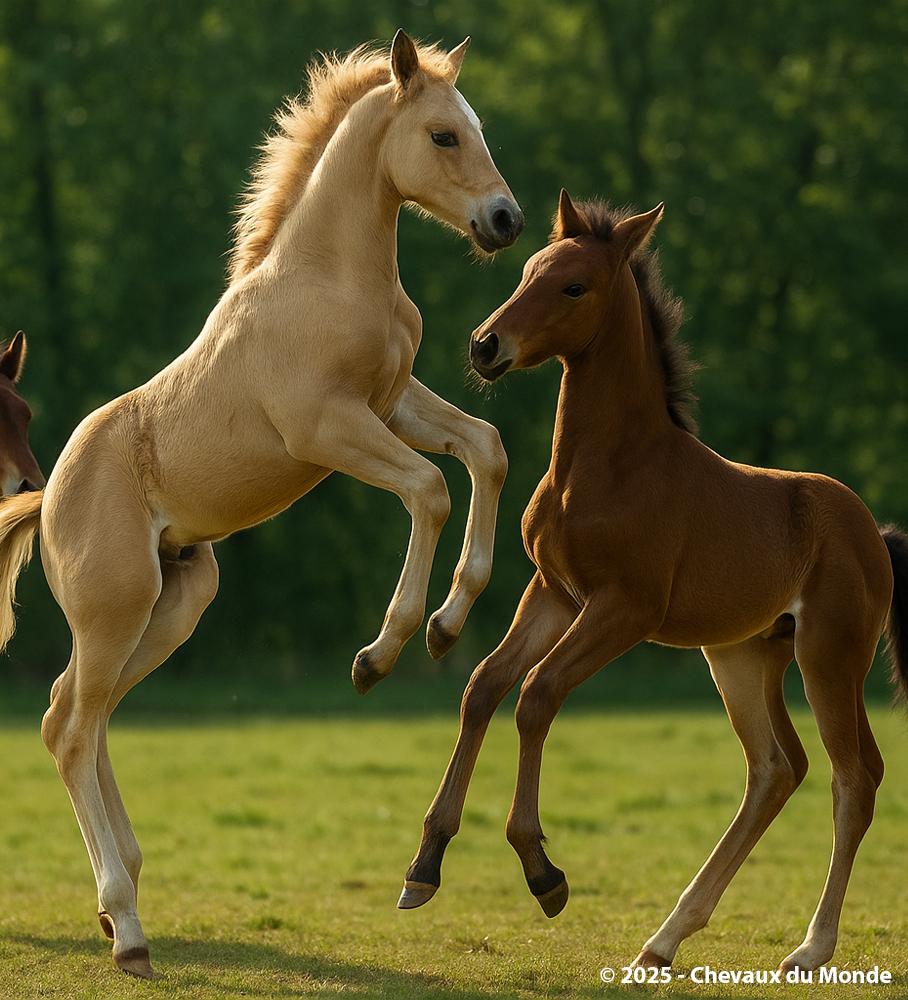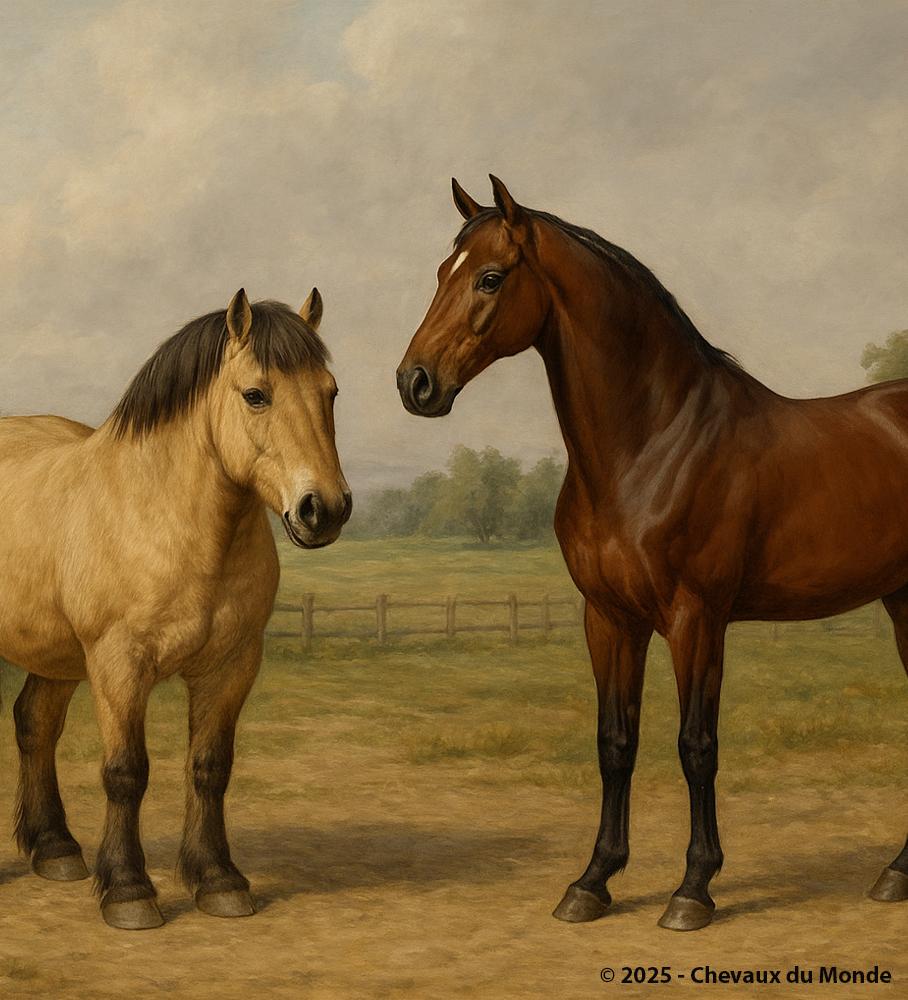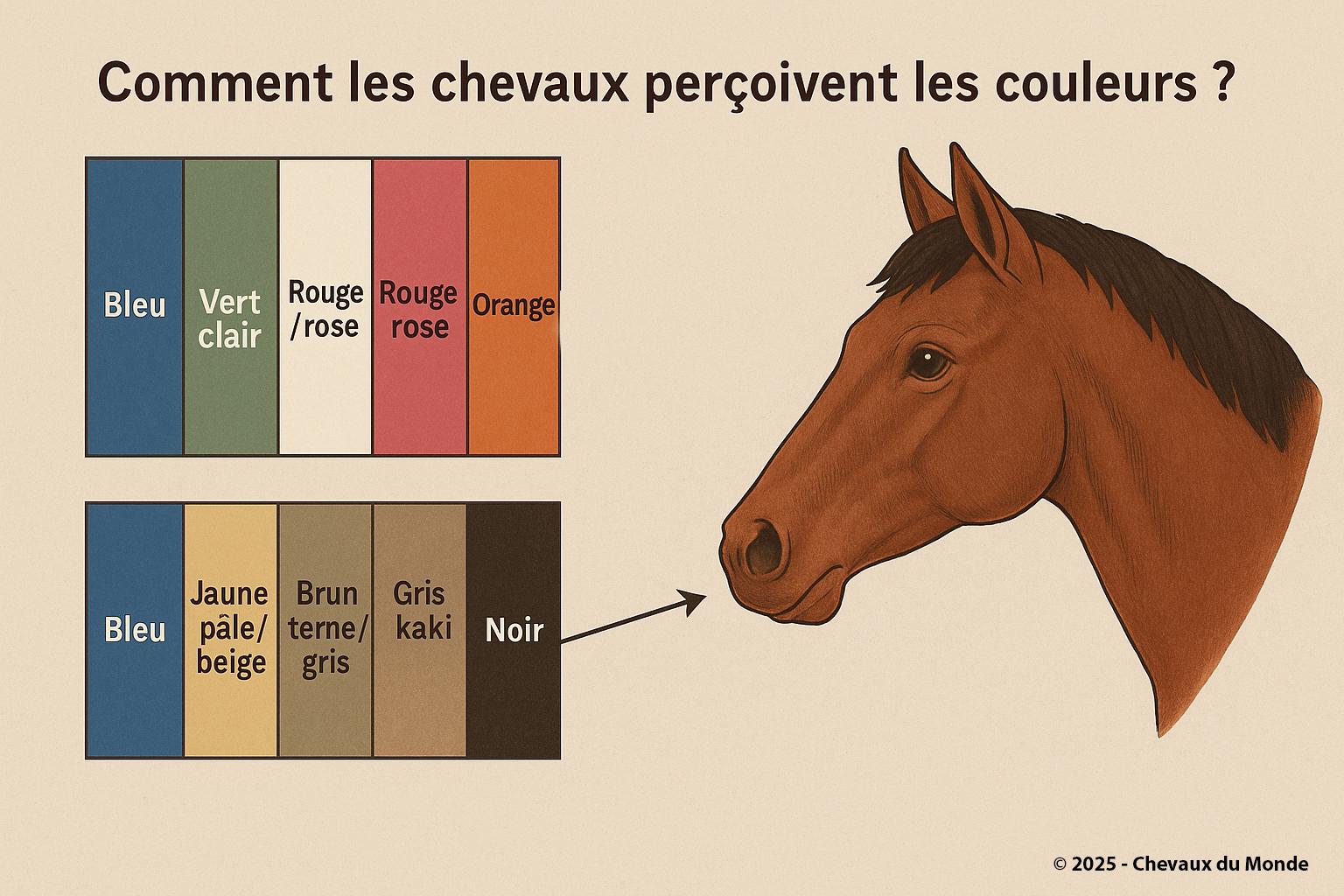DECODING HORSE BODY LANGUAGE: 10 KEY SIGNALS

A woman and a bay horse gently touch foreheads with eyes closed, sharing a peaceful moment of trust outdoors.
Horses don’t speak, but they constantly communicate. Understanding their body language is essential to build trust, detect discomfort, and prevent accidents.
Here are 10 key signals to help you read your horse more accurately.
1. Ears: the emotional compass
- Pointing forward – the horse is attentive to what it sees.
- Turned backward – it listens behind; not always a sign of irritation.
- Flattened against the neck – clear sign of irritation, pain, or aggression.
👉 The ears move constantly – they reveal where the horse’s attention is directed and reflect its emotional state.
2. Tail: the irritation indicator
- Relaxed and still – calm.
- Slow swishing – flies, minor annoyance.
- Quick or jerky movements – tension, frustration, or pain.
3. Nostrils: the stress barometer
- Relaxed – the horse is calm.
- Flared – physical effort or excitement.
- Trembling or tight – fear, stress, or pain.
4. Eyes: the mirror of emotion
- Soft, open eyes with regular blinking – well-being.
- Wide eyes, visible sclera (white) – fear, surprise, or pain.
- Rapid blinking or half-closed lids – fatigue, stress, or submission.
5. Head: posture and carriage
- Lowered head – relaxation, curiosity, or rest.
- High, tense head – alert, wary, or excited.
- Head shaking – discomfort or response to stimulus.
6. Mouth and lips
- Light chewing without a bit – appeasement, thinking, or learning.
- Teeth grinding – stress, pain, or frustration.
- Drooping lips – relaxation.
7. Overall posture
- Relaxed body, resting limbs – well-being.
- Tense muscles, leaning backward – mistrust or fear.
- Curled body, tucked tail – submission or pain.
8. Movement and approach
- Direct and confident approach – trust.
- Sideways steps, hesitation, retreat – anxiety.
- Circling a human or another horse – cautious curiosity.
9. Hooves and limbs
- Pawing at the ground – impatience or frustration.
- Kicking into the air – irritation or threat.
- Slowly lifted front leg – anticipation, request, or tension
10. Yawning and rolling
- Yawning – can signal relaxation, but also stress or pain.
- Rolling – often normal relaxation, but post-meal rolling can indicate colic.
🎯 Why learn to read these signals?
Recognizing these signs allows you to:
- Prevent risky behavior (kicking, biting)
- Improve training and communication
- Detect stress or illness early
- Build a respectful and balanced relationship
"A good rider listens to their horse long before speaking to it."
🔎 Also read
Hierarchy and Herd Life: What We Learn from Horses in Freedom


